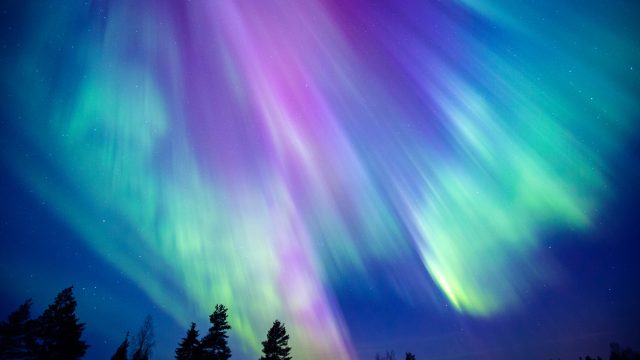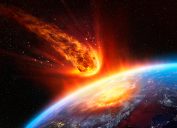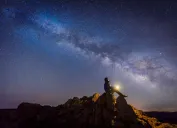Solar Flare Brings Northern Lights to the U.S. This Week—Where to See Them
Current forecasts show that people in higher latitude states could get a glimpse of the auroras.

Even though 2024 has only just begun, there's already plenty to be excited about when it comes to special natural events. Amateur astronomers are likely already making plans for the Quadtrantid meteor shower that will soon peak in what many experts consider one of the year's best spectacles. But besides "shooting stars," you might have another reason to look up at night, as the Northern Lights could brighten the skies in the U.S. this week.
RELATED: "Devil Comet" With Horns Is Racing Toward Us—Here's When and Where It Arrives.
According to the National Oceanic and Atmospheric Administration's (NOAA) Space Weather Prediction Center (SWPC), the approaching spectacle is thanks to a strong solar flare that occurred hours before the year ended on Dec. 31. The coronal mass ejection (or CME) was measured as an X5.0, with X denoting the highest group on the scale used to classify solar flares, according to NASA. It's also the strongest flare detected by the agency since an X8.2 CME was recorded on Sept. 10, 2017.
In a post to X (formerly known as Twitter) on Jan. 1, SWPC said that it had "determined the possibility of shock influences near Earth early as 2 Jan." and placed a "minor geomagnetic storm watch" in effect for Tuesday. The agency added that while storms of this size are relatively common, the "aurora may become visible along the horizon of northern tier and far north upper Midwest states" tonight.
Activity on the sun has increased in recent months due to the current timing of Solar Cycle 25. The period refers to a roughly 11-year stretch between highs and lows in solar activity that occur when our star's magnetic poles eventually reverse, according to NASA. But while original estimates had forecast the expected peak to land sometime in 2025, other evidence suggests the solar maximum might actually be arriving sooner after increased sunspots and more intense solar flares were observed, Live Science reported.
While atypically large CMEs can create dazzling aurora displays, they still affect Earth in other ways. According to NASA, the radiation "can impact radio communications, electric power grids, navigation signals, and pose risks to spacecraft and astronauts." However, in the case of the latest X5.0 flare, NOAA said that only high-frequency radio could experience some interference or signal loss and that "the general public need not be concerned."
Even though many people who are not accustomed to seeing the Northern Lights might have their chance tonight, this also likely won't be the only time in the coming months when they'll make an appearance in different places. As the sun continues to approach its solar maximum, events like the latest solar flare will likely continue to push the aurora well past their typical arctic zones and make them visible further south than usual, Forbes reports.
RELATED: For more up-to-date information, sign up for our daily newsletter.





















